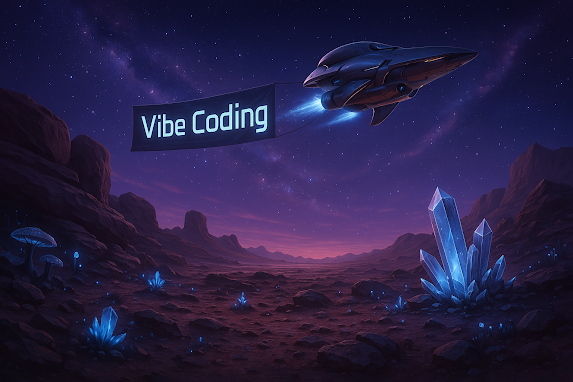In the past few months, I've embarked on an experiment that has fundamentally changed how I approach software development. I've been "vibe coding" - essentially directing AI to build software for me without writing a single line of code myself. This journey has been eye-opening, and I'd like to share what I've learned and where I think this is all heading.
My Vibe Coding Journey
I started vibe coding with Claude and Anthropic's Sonnet 3.5 model, later upgrading to Sonnet 3.7, Claude Code, and other tools. My goal was straightforward but comprehensive: create a CRM system with all the features I needed:
- Contact management (CRUD operations, relationships, email integration, notes)
- Calendar management (scheduling meetings, avoiding conflicts)
- Group management for organizing contacts
- A campaign system with templates
- A standalone application using the CRM's APIs for external contacts to book meetings direct
The technical evolution of this project was interesting. I changed backends four times:
- Initially used local browser storage
- Migrated to Google Drive file storage
- Finally settled on Firebase storage
- Created APIs for all the CRUD functions with Firebase as backend.
I ultimately integrated fully with Google Cloud/Firebase since my domain was already on Google Workspace, allowing me to leverage Google APIs for email and calendar functionality. The entire project took about 5 days over a 2.5 months period and cost approximately USD $300. And the most surprising part? I haven't written a single line of code myself!
Key Learnings
Context Window Limitations Matter
The most critical insight was that context window size is everything. Using aggregators like Openrouter, I could get a 200K token context from Anthropic. This directly affects what your project can encompass - there's a hard limit to how much code and context an AI can process at once.
Project Management Must Adapt
Given token limitations, you need to manage projects by breaking them into smaller, well-insulated components. APIs help tremendously with this, as do clear implementation guidelines about what to build when. The traditional monolithic approach simply doesn't work when vibe coding.
Prompting is a Critical Skill
Providing the right amount of context with each prompt remains hugely important. Every instruction needs to be carefully balanced - not too verbose, not too sparse. Modern coding agents have built-in tools to help with this (like Claude-code's `/init` function), but prompt engineering is still an essential skill.
Version Control is Non-Negotiable
Commit changes frequently, ideally after every successful prompt. Some agents can do this automatically, including relevant context as comments. Without this discipline, you risk the AI corrupting your codebase as it loses context of previous changes.
Testing Remains Essential
Every change needs thorough testing, ideally with automated unit tests. This is relatively straightforward for frontend components with APIs, but becomes more complex when they're behind security layers.
Security Requires Extra Vigilance
Never pass access tokens or other security credentials directly to your codebase. These should be kept separate and away from AI's reach to prevent tokens from being accidentally embedded in code.
Where I Think This is Heading
Vibe Coding is Here to Stay
However, we'll still need programmers and architects to make it work effectively. Especially in corporate environments, human experts will be essential for code review, compliance checking, and security validation.
This won't replace programmers but will dramatically increase their productivity. The main limitation today is that current LLMs don't have large enough context windows to handle extensive codebases - but I expect this will be solved sooner rather than later.
Specialized Coding Models Are Coming
We're just at the beginning of vibe coding. I anticipate many advances with models specifically trained for software development rather than general-purpose use. The speed of progress suggests that vibe coding will become increasingly precise and powerful.
No-Code May Make a Comeback
I was never a big fan of traditional no-code approaches because they inevitably hit limitations. However, I believe GenAI could revitalize this space. Rather than using middleware with components that users connect, AI could generate actual code with specific constraints that non-programmers could work with effectively.
This could represent an entirely new category of LLMs - models specifically designed for software development that bridge the gap between traditional programming and no-code solutions.
The future of software development is changing rapidly, and my experience with vibe coding has convinced me we're just seeing the beginning of a major transformation in how software gets built.

Comments
Post a Comment